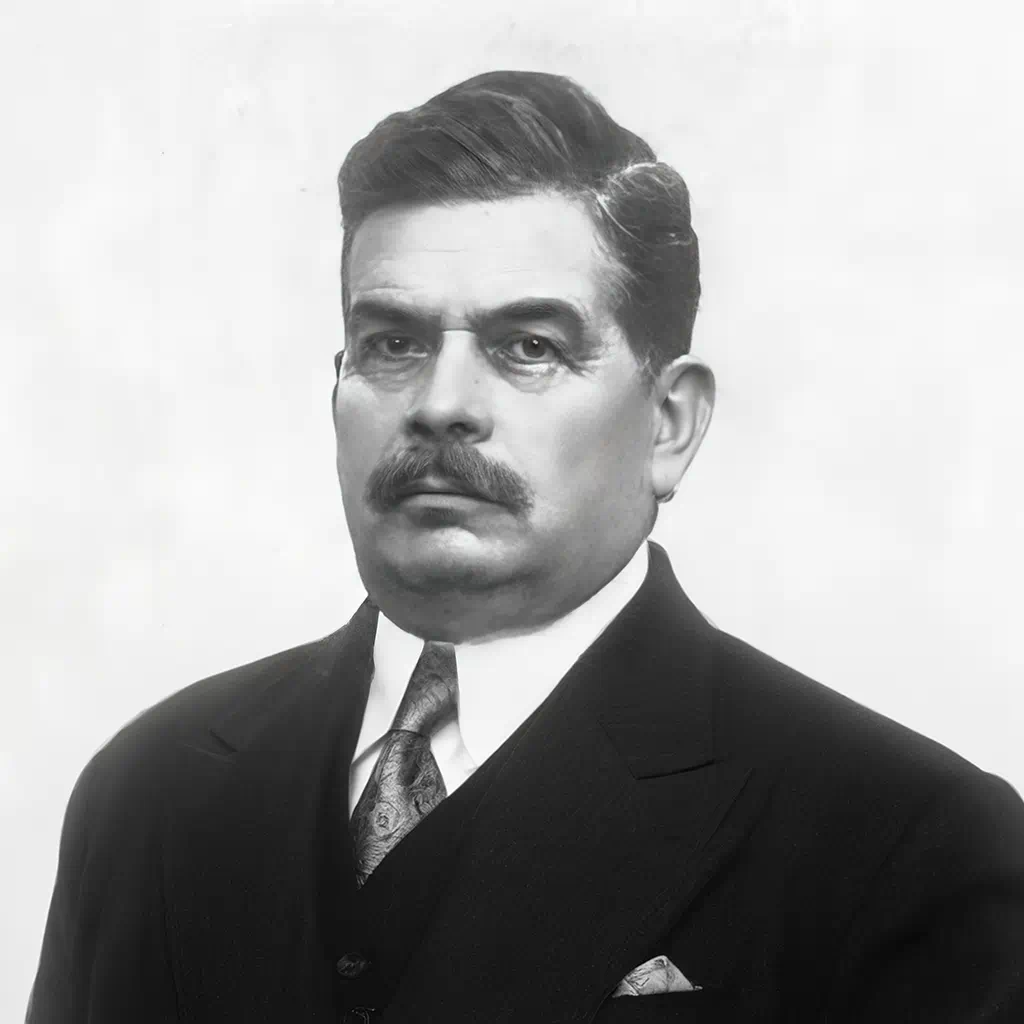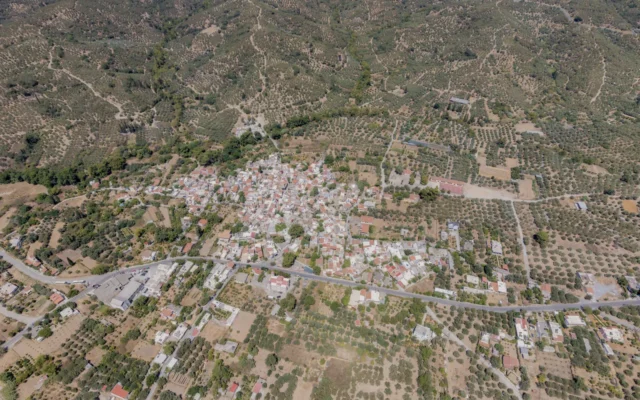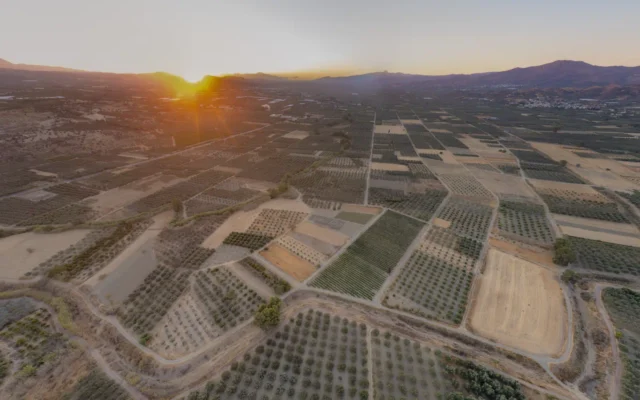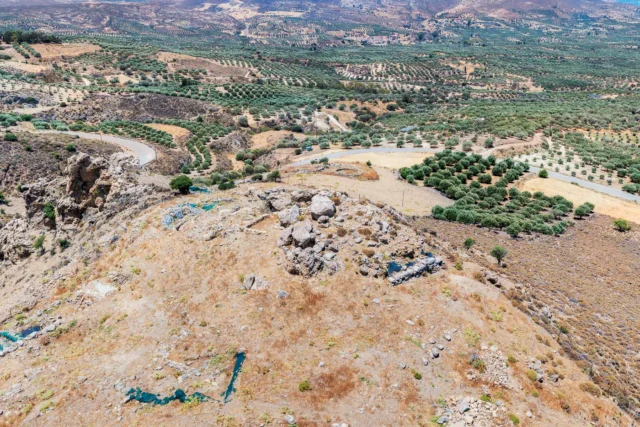
Stefanos A. Xanthoudides (1864-1928) was a groundbreaking Greek archaeologist and scholar who dedicated his life to uncovering and preserving the rich cultural heritage of Crete. His extensive work spanned various periods, from the Bronze Age civilizations of Minoan Crete to the Byzantine era and beyond. His meticulous excavations, insightful publications, and tireless efforts to protect Cretan antiquities established him as a leading figure in the field of archaeology.
Early Life and Education
Born in the village of Avdou near Heraklion, Crete, in 1864, he displayed an early passion for learning and scholarship. He pursued his higher education at the University of Athens, where he obtained a degree in Philosophy and Philology in 1888. His academic journey laid the foundation for his future contributions to archaeology and Cretan studies.
Archaeological Pursuits
His archaeological career began in earnest in the late 1880s when he assumed the role of Secretary of the Heraklion Educational Association (Philekpaideutikos Syllogos), under the presidency of Iosif Chatzidakis. This marked the start of a fruitful collaboration between the two men, who would play pivotal roles in the development of Cretan archaeology.
In 1899, following the liberation of Crete from Ottoman rule, he was appointed the Ephor of Antiquities for the Cretan State, a position he held for fifteen years. During his tenure, he oversaw the organization and preservation of numerous archaeological sites and artifacts across the island. He also played a crucial role in establishing the first archaeological museum in Heraklion, curating its collection and writing its first guidebook.
His archaeological work extended beyond administrative duties. He conducted extensive excavations at various sites throughout Crete, including the Minoan palace at Nirou Chani, the tholos tombs of the Mesara Plain, and the ancient city of Axos. His excavations unearthed a wealth of artifacts and architectural remains, shedding light on the island’s complex and fascinating history.
One of his most significant contributions was his pioneering research on the tholos tombs of the Mesara Plain. These monumental circular tombs, dating back to the Early Minoan period, represented a unique architectural form in Crete. His meticulous excavations and detailed publications on these tombs remain essential references in the field of Minoan archaeology.
In addition to his fieldwork, he was a prolific scholar, publishing over seventy studies on various aspects of Cretan archaeology, history, and folklore. His writings demonstrated a deep understanding of the island’s cultural heritage and a commitment to sharing his knowledge with both the academic community and the general public.
Legacy and Recognition
His contributions to Cretan archaeology were widely recognized during his lifetime and continue to be celebrated today. He was elected a corresponding member of the Academy of Athens shortly before his death in 1928, a testament to his scholarly achievements. His legacy lives on through his extensive publications, the archaeological sites he excavated, and the institutions he helped establish.
His work has had a lasting impact on our understanding of Cretan history and culture. His meticulous excavations and insightful interpretations have provided valuable insights into the lives of the island’s ancient inhabitants. His dedication to preserving Crete’s archaeological heritage has ensured that future generations can continue to learn from and appreciate the island’s rich past.
Beyond Archaeology
While he is primarily remembered for his archaeological achievements, his interests and contributions extended beyond this field. He was a passionate advocate for education and cultural preservation, working tirelessly to promote the study and appreciation of Crete’s heritage. He also made significant contributions to the study of Cretan folklore and literature, publishing several works on these subjects.
His multifaceted career reflects his deep love for his homeland and his unwavering commitment to its cultural legacy. He was a true pioneer, paving the way for future generations of scholars and archaeologists to explore and understand the complexities of Cretan history.
Xanthoudides as a Scholar
He was not only a skilled archaeologist but also a dedicated scholar. He meticulously documented his excavations and findings, publishing detailed reports and analyses in various academic journals. His publications were characterized by their clarity, precision, and insightful interpretations.
His scholarly work was not limited to archaeology. He also made significant contributions to the study of Cretan folklore and literature. He collected and published numerous folk tales, songs, and proverbs, preserving the island’s oral traditions for future generations. He also conducted research on Cretan dialects and literature, contributing to our understanding of the island’s linguistic and literary heritage.
His commitment to scholarship extended beyond his own research. He actively encouraged and supported the work of other scholars, fostering a vibrant intellectual community in Crete. He corresponded with numerous archaeologists and researchers, sharing his knowledge and insights and contributing to the advancement of Cretan studies.
Xanthoudides as a Public Figure
He was not content to confine his knowledge to the academic world. He believed in the importance of sharing his discoveries and insights with the general public. He wrote numerous articles and guidebooks on Cretan archaeology and history, making these subjects accessible to a wider audience.
His efforts to popularize archaeology and Cretan studies were particularly important in the early 20th century when Crete was emerging from centuries of Ottoman rule. His work helped to foster a sense of pride and identity among the Cretan people, reminding them of their rich and ancient heritage.
He was also a vocal advocate for the protection and preservation of Crete’s cultural heritage. He campaigned against the illegal excavation and export of antiquities and worked tirelessly to ensure that the island’s archaeological treasures were properly cared for and displayed.
Impact on Cretan Archaeology
His work laid the foundation for the development of Cretan archaeology as a distinct and respected field of study. His excavations and publications provided a wealth of data and insights that continue to inform archaeological research today.
His influence can also be seen in the institutions he helped establish. The Heraklion Archaeological Museum, which he helped to found, remains one of the most important museums in Greece, housing a vast collection of Minoan artifacts. His work also inspired the creation of other archaeological museums and research centers throughout Crete.
His legacy as a pioneer of Cretan archaeology is undeniable. His passion for his homeland, his dedication to scholarship, and his commitment to public education have left an indelible mark on the field. His work continues to inspire and inform archaeologists and scholars today, ensuring that the rich and complex history of Crete will never be forgotten.
The Tholos Tombs of the Mesara Plain
One of his most enduring legacies is his work on the tholos tombs of the Mesara Plain. These monumental circular tombs, constructed during the Early Minoan period (c. 3000-2000 BCE), are a unique and distinctive feature of the Cretan landscape.
His excavations of these tombs revealed a wealth of information about the burial practices and beliefs of the early Minoans. The tombs contained a variety of grave goods, including pottery, jewelry, and weapons, providing insights into the social status and material culture of the people who built them.
His research on the tholos tombs also shed light on the architectural and engineering skills of the early Minoans. The tombs were constructed with impressive precision, using large stones and sophisticated building techniques. Their circular shape and vaulted roofs demonstrate a mastery of architectural design and construction.
His publications on the tholos tombs, particularly his 1924 monograph “The Vaulted Tombs of Mesara,” remain essential references for archaeologists studying the Early Minoan period. His meticulous documentation and insightful interpretations have provided a valuable foundation for understanding these remarkable monuments.
Other Archaeological Work
While the tholos tombs were a major focus of his research, he also conducted excavations at numerous other sites throughout Crete. His work at the Minoan palace of Nirou Chani, for example, revealed important information about the architecture and function of these complex structures.
He also excavated several cemeteries and settlements dating to various periods, from the Neolithic to the Byzantine era. His excavations provided valuable insights into the daily lives and cultural practices of the people who inhabited Crete throughout its long and storied history.
Stefanos Xanthoudides was a remarkable figure who made significant contributions to the field of Cretan archaeology and the broader study of the island’s history and culture. His passion, dedication, and scholarly rigor continue to inspire and inform researchers today. His legacy serves as a reminder of the importance of preserving and understanding our shared cultural heritage.
Key points
- Born: 1864, Avdou, Crete, Greece
- Died: September 18, 1928, Greece
- Nationality: Greek
- Legacy: Pioneering archaeologist and scholar who made significant contributions to the study of Cretan history and culture.
- Known for: Excavations of Minoan sites, research on tholos tombs, publications on Cretan archaeology and folklore.




